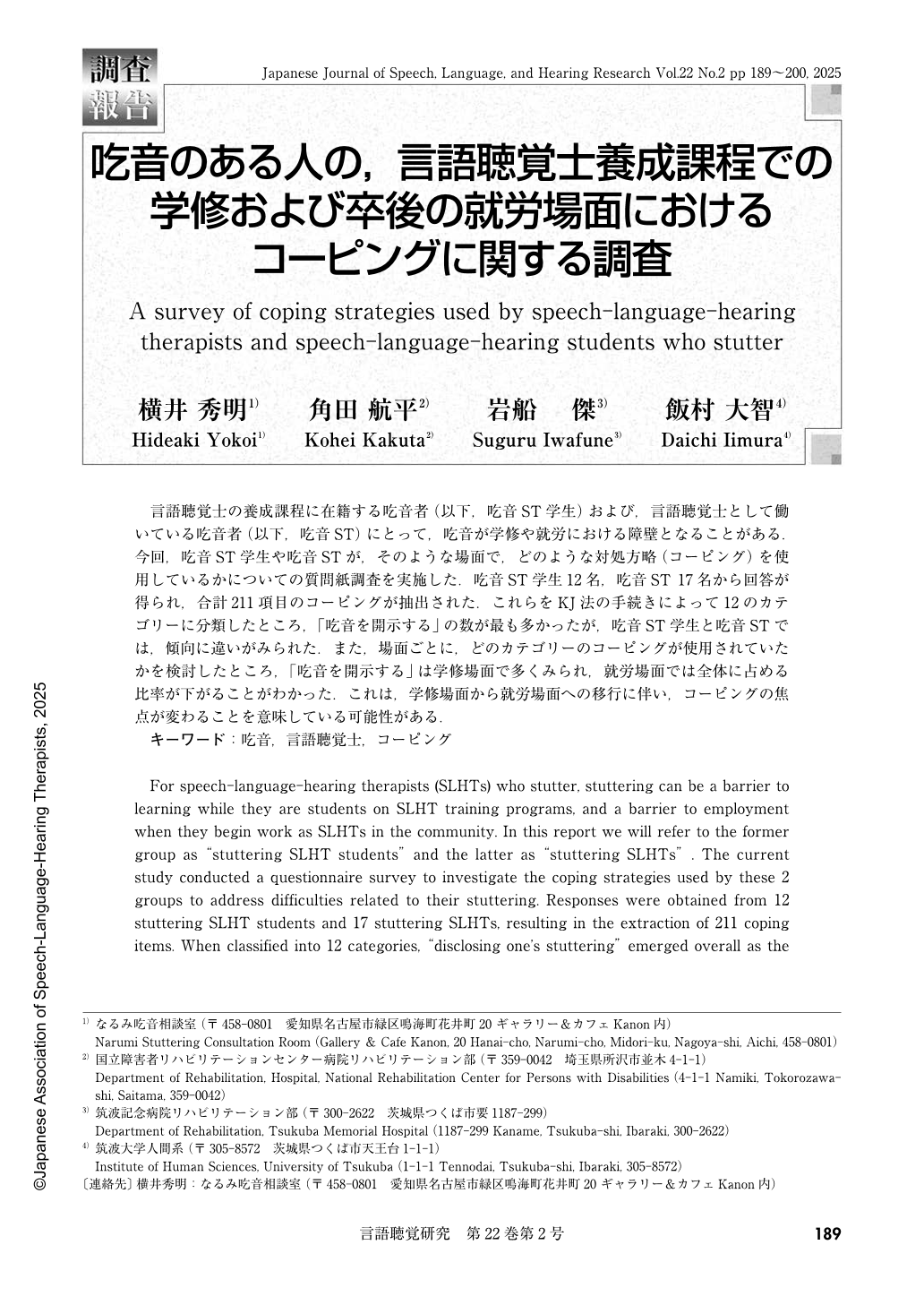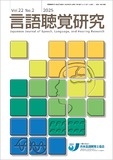Japanese
English
- 有料閲覧
- Abstract 文献概要
- 1ページ目 Look Inside
- 参考文献 Reference
言語聴覚士の養成課程に在籍する吃音者(以下,吃音ST学生)および,言語聴覚士として働いている吃音者(以下,吃音ST)にとって,吃音が学修や就労における障壁となることがある.今回,吃音ST学生や吃音STが,そのような場面で,どのような対処方略(コーピング)を使用しているかについての質問紙調査を実施した.吃音ST学生12名,吃音ST 17名から回答が得られ,合計211項目のコーピングが抽出された.これらをKJ法の手続きによって12のカテゴリーに分類したところ,「吃音を開示する」の数が最も多かったが,吃音ST学生と吃音STでは,傾向に違いがみられた.また,場面ごとに,どのカテゴリーのコーピングが使用されていたかを検討したところ,「吃音を開示する」は学修場面で多くみられ,就労場面では全体に占める比率が下がることがわかった.これは,学修場面から就労場面への移行に伴い,コーピングの焦点が変わることを意味している可能性がある.
For speech-language-hearing therapists (SLHTs) who stutter, stuttering can be a barrier to learning while they are students on SLHT training programs, and a barrier to employment when they begin work as SLHTs in the community. In this report we will refer to the former group as “stuttering SLHT students” and the latter as “stuttering SLHTs”. The current study conducted a questionnaire survey to investigate the coping strategies used by these 2 groups to address difficulties related to their stuttering. Responses were obtained from 12 stuttering SLHT students and 17 stuttering SLHTs, resulting in the extraction of 211 coping items. When classified into 12 categories, “disclosing one's stuttering” emerged overall as the most common response, but there were differences in the data from the 2 groups. While “disclosing one's stuttering” was the most common strategy reported by the stuttering SLHT students, its use was proportionately lower in work situations reported by the stuttering SLHTs. This may suggest that the focus of coping strategies changes with the transition from educational to work situations.

Copyright © 2025, Japanese Association of Speech-Language-Hearing Therapists. All rights reserved.


